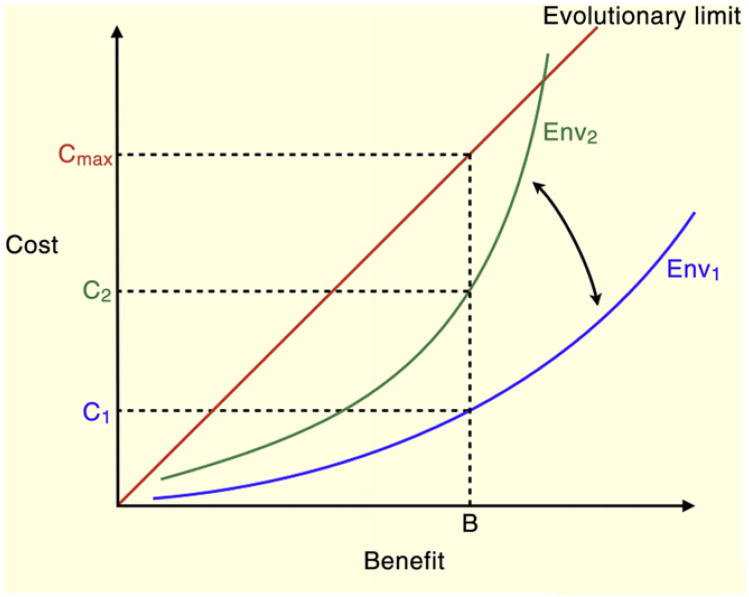Figure 1.
Cost–benefit trade-offs are optimized to specific environments and can be affected by environmental change.
A particular trait can be selected and maintained by evolution as long as the benefit of the trait outweighs the cost. Here the trait exists in Environment 1 (Env1) with benefit B and cost C1. As the environment changes, the cost of maintaining benefit B increases to C2. In all conditions, the boundary of adaptive traits is defined by the line of cost ≤ benefit, where traits below and to the right of the line are considered adaptive and traits above and to the left of the line are maladaptive. However, there is an upper limit to the acceptable cost where the trait becomes detrimental regardless of the benefit. These traits are defined by a high absolute cost.

